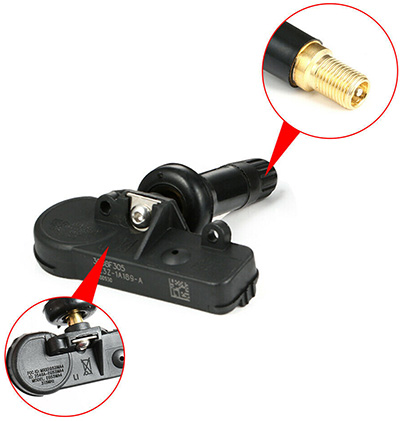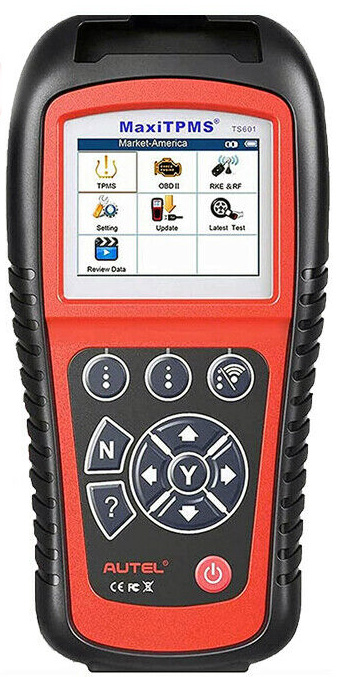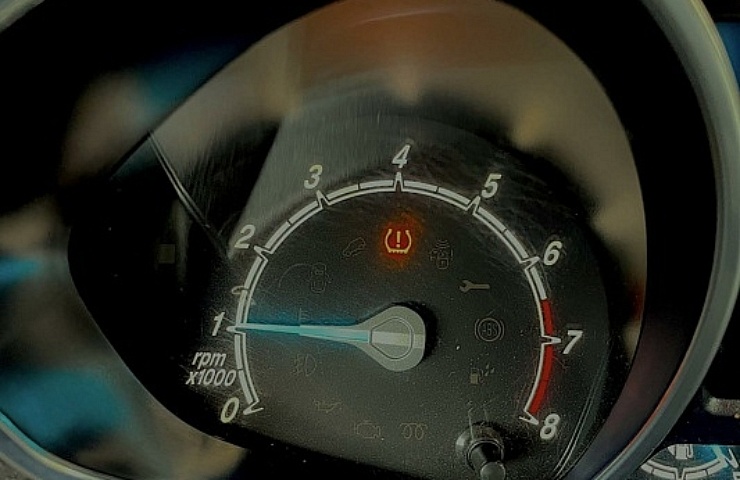Contents
A tire pressure light on your dashboard tells when the air in your tires is sufficient. With prompt action, you can prevent uneven tread wear and a potential blowout.
What Is the Tire Pressure Light?
Tire pressure warning lights are found on the gauge cluster of your vehicle. The light is typically amber or yellow and looks like a tire cross-section. There’s also an exclamation point or an indicator that reads “TPMS.”
Your car and truck tires should be properly inflated to the manufacturer’s specs for optimal safety. If one of the tires is low on air, the tire pressure monitoring system (TPMS) will alert you.
Shop now for tire inflatorsMore advanced tire pressure monitoring systems tell you which tire is the problem. They may also show you the tires’ real-time pressure. Some systems also indicate how much air is in the spare tire.
If Your Tire Pressure Light Is Blinking vs. Solid
When the tire pressure light comes on solid, it commonly means the air pressure in one of the tires is out of the suggested range. You should check the tires and inflate them to manufacturer specifications.
Your vehicle’s recommended tire pressure is often on a sticker inside the driver’s door. Do not use the pounds per square inch (psi) stated on the sidewall of the tire. That measurement shows the max pressure the tire can handle without failure. It is not the recommended psi.

A TPMS sensor is incorporated into the tire valve.
A blinking warning light could indicate a problem beyond proper air pressure. The TPMS utilizes sensors and batteries, so a mechanical failure could occur.
In some situations, your tire pressure light might repeatedly come on. There are several possible causes. First, your tire could have a slow leak, causing it to lose air continually. If you check the pressure and find it is low every time the light comes on, it’s time to fix the tire.
Shop now for TPMS sensorsOtherwise, there could be a mechanical issue leading to a faulty reading. For example, the system might trigger the light if the TPMS sensor or battery fails. Therefore, you may need to replace the battery or sensor to get the light turned off.
What PSI Triggers the Pressure Light to Come On?
It depends on your vehicle. Every manufacturer sets a specific limit on the TPMS for an alert when it’s outside of that range.
Air pressure is measured in pounds per square inch (psi). So, if your vehicle’s system is configured to alert when the pressure drops 10 percent below the required value, you may get an alert before the tire loses air.
Based on the 10-percent estimate, here’s an example of when the light may come on.
- Recommended 28 psi: Light comes on at 25 psi
- Recommended 30 psi: Light comes on at 27 psi
- Recommended 32 psi: Light comes on at 29 psi
- Recommended 34 psi: Light comes on at 31 psi
It’s best not to assume the light turns on at 10 percent. In some cases, it can be as much as 25 percent. If that’s the case, your tire has already lost air, so you should stop driving immediately when the light comes on.
The Tire Pressure Light in Cold Weather
Tire pressures drop a pound for every 10 degrees that the temperature goes down. So if the tires were inflated adequately in warm weather, they could drop enough to turn on the alert in cold weather.

(Photo courtesy of Audi)
For example, a tire pressure warning could be on when you start the car on a cold morning but turns off as the temperature gets warmer. As you drive, tires will warm up, increasing the internal pressure by up to three psi.
These are the reasons we always recommend checking tire pressures before driving. You want to be sure that the pressure is correct when cold.
What If Your Tires Are Overinflated?
It depends on what generation of TPMS your car is using. For example, some vehicles only activate the warning light when the tires are low on pressure.
However, you could have a vehicle that alerts you when there’s too much pressure. Either way, you should stop and check the tires when the light comes on.
Can You Drive With the Tire Pressure Light On?

If the light comes on with all of your tires in the recommended range, there’s something else wrong. You can drive to a local tire shop to have the battery or sensor replaced.
Shop now for tire pressure gaugesHowever, you don’t want to continue driving with the light on. While illuminated, you cannot know if a tire has fallen below the recommended psi.
How Do You Reset the Tire Pressure Light?
First, inflate the tires to the recommended amount. Once you inflate the tires, you might need to reset the light unless it goes off automatically.

If all else fails, you can have a local shop reset the system with a TPMS reprogramming tool.
Try these steps if it is still on after inflating the tires:
- Push the pressure monitor reset button, which is found under the steering wheel of some cars.
- Drive your vehicle for 10 minutes on the highway. Pull over and restart the car to see if the light goes out.
- (On older models) Turn the key to the “on” position without starting the vehicle. Push the TPMS reset button.
- Wait for the tire pressure light to blink three times. Release the button and start the engine.
- Start the engine and let it run for 20 minutes, giving the sensors time to reset.
- Inflate all four tires to three psi more than the recommended amount. Completely deflate the tires and re-inflate them to the recommended pressure. This can cause the light to reset.
If none of these suggestions work or you would rather know how to handle it for your specific model, look in your owner’s manual.
Shop now for TPMS programming toolsAdditionally, something could be wrong if you can’t get the light off after inflating the tires. Have the vehicle checked at a local tire shop.
Will the Tire Pressure Light Make You Fail an Emissions Test?
In most states, having the TPMS light on won’t cause you to fail emissions testing. However, it’s essential to follow a regular maintenance schedule. The federal government mandated TPMS systems back in 2005.
The TPMS light could cause you to fail an inspection in some states. Consult with local or state authorities, which might view the warning light as a safety concern. Regardless, the smart move is to properly inflate your tires and ensure the light is off before driving.
Shop now for TPMS sensors




